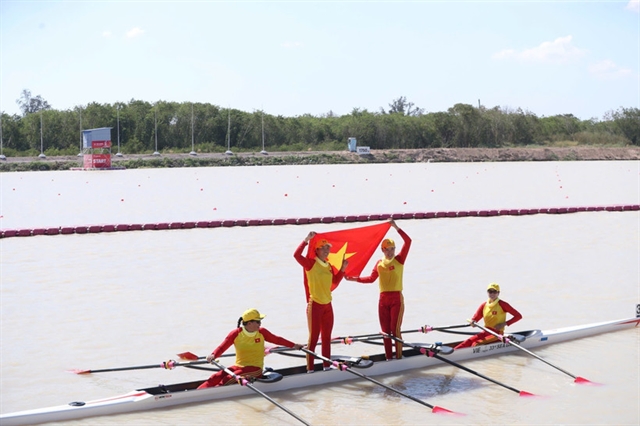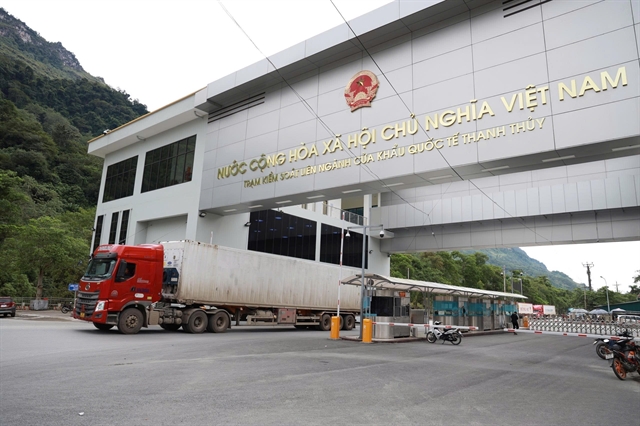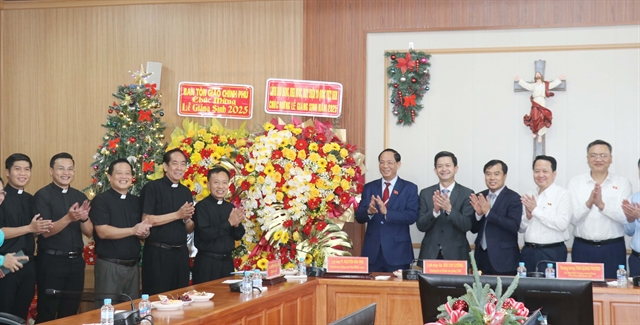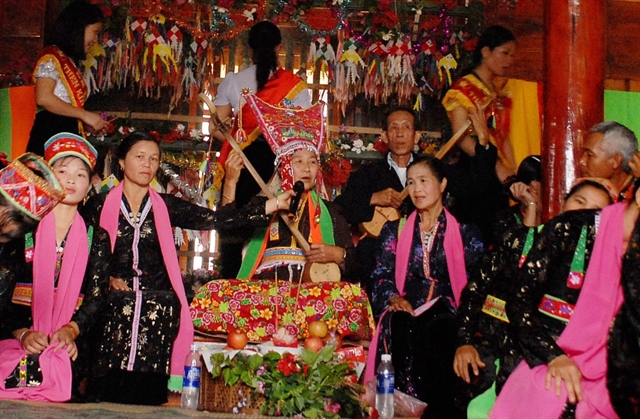 Life & Style
Life & Style

Already popular for its beautiful terraced rice fields, a district in mountainous Yen Bai province hopes to expand the tourist season with yellow canola blooms, Đinh Hữu Dư reports
 |
| In bloom: Canola fields are expected to bloom in February and March this year. —VNA/VNS Thế Duyệt |
Already popular for its beautiful terraced rice fields, a district in mountainous Yên Bái province hopes to expand the tourist season with yellow canola blooms, Đinh Hữu Dư reports
Terraced rice fields, always an arresting sight, had already put Yên Bái Province’s Mù Căng Chải District on the nation’s tourist map, but there is an added attraction now.
The terraces now bloom with the yellow flowers of canola, a rapeseed cultivar famous as the raw material for a cooking oil.
Starting from February this year, visitors can feast their eyes of terraced canola fields in bloom.
The district’s La Pán Tẩn Commune, located on the Khau Phạ mountain pass, stands at about 2,000 metres above sea level. In the early 1990s, the commune was notorious for growing opium poppy, but this was replaced with rice, making it one of the best destinations for rice terraces in Việt Nam.
Last year, local farmers started planting an additional crop – canola.
Hảng A Lồng, a farmer in the commune, started growing canola on more than 1,000sq m of land in December last year. “Cultivation land here is arid, and there is not enough water to grow rice in winter-spring season; so it is good to grow canola in that period. If the weather is favourable, we can earn significant extra income,” said Lồng.
Giàng Chứ Ly is well known in the commune as a man who is always on the lookout for ways to reduce poverty in the locality. With ten buffaloes and cows, and more than 5,000sq.m of canola, apart from five tonnes of rice and maize, his family earns more than VNĐ100 million (US$4,400) per year.
 |
| Signature vista: Rice terraces have been a popular attraction in Mù Căng Chải District, Yen Bai Province. —VNA/VNS Thanh Hà |
Ly said fellow villagers are changing the way they think and work. They now know to combine farming with tourism. Besides rice cultivation, they were growing canola for extra income.
The commune has planted a total of 100ha of canola, the largest area in Mù Căng Chải.
The Chairman of the commune’s People’s Committee, Hảng Xáy Chông, said that their rice terraces have attracted many Vietnamese and foreign visitors every year; and now, “ by growing canola, farmers will not only benefit from the oil seeds, but also tourism…, and their lives will improve.”
La Pán Tẩn commune has about 750 households with 5,000 members. Among them, 99 per cent belong to the Mông ethnic minority. Agriculture is still the mainstay. Although the poverty rate is high, the situation is changing for the better rapidly, said Chông.
At the district level, of more than 1,600ha of agricultural land, farmers planted canola on 500ha during the 2016 winter-spring crop. Authorities are hoping that the yellow canola in bloom will draw more visitors to the area, expanding the tourism season that has been confined to the rice crop thus far.
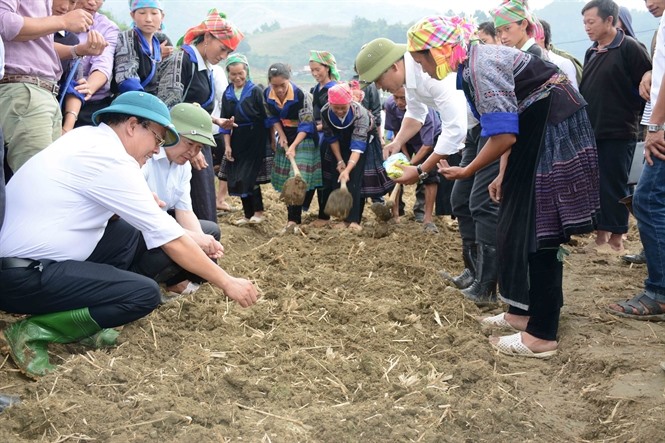 |
| As they sow: Mù Căng Chải leaders and locals plant canola seeds. —Photo hoinongdan.org.vn |
Deputy Head of Mù Căng Chải Agriculture and Rural Development bureau, Lương Văn Thư, said: “The district aims to develop agriculture associated with tourism.”
The Mù Căng Chải rice terrace festival is held during the harvest season in mid-September every year. This is the time that the locality receives the most number of visitors. In order to diversify income sources as well as tourism products, the authorities have encouraged local farmers to grow rice on schedule so that they ripen at festival time, and to plant canola in December so that they bloom by February and March this year.
“These yellow canola terraces have great potential to be a new tourism product of the locality, besides the traditional rice terraces. To motivate the farmers, the district has called for businesses to sign contracts with the commune and invest in farming oil seeds, provide fertilisers and buy the produce,” said Thư. VNS

